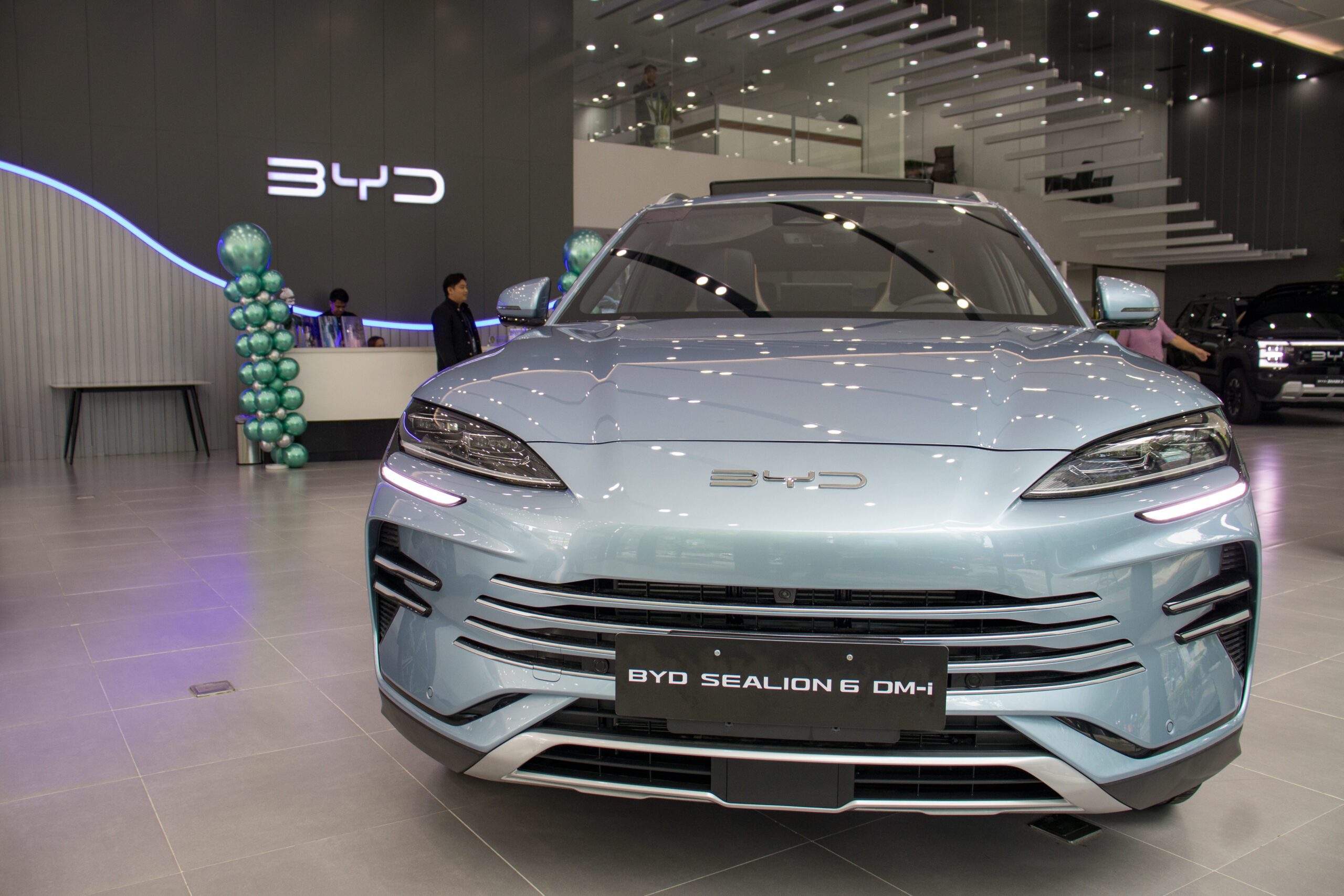Physical Address
304 North Cardinal St.
Dorchester Center, MA 02124
Physical Address
304 North Cardinal St.
Dorchester Center, MA 02124

While BYD’s vehicles — like Tesla’s — are imported from China, the brand’s competitive pricing, plug-in hybrid options, and expanding dealer network have resonated with Filipino buyers
MANILA, Philippines – Chinese automaker BYD has overtaken Tesla as the world’s top electric vehicle (EV) seller, and its dominance is reflected in the Philippine market. In May, BYD Philippines marked a major milestone with the sale of its 10,000th new energy vehicle (NEV), solidifying its lead locally.
Much of that growth is being driven by the Sealion 6, BYD’s top-selling model in the country. The plug-in hybrid SUV accounted for 2,669 units sold in 2024 alone, over half of all models sold that year. The model captured a 19% share of the combined NEV and hybrid electric vehicle (HEV) market, and 14.6% of the overall (both gas and NEV) compact SUV category.
BYD also closed the year with a 69% share of the battery electric vehicle (BEV) category.
While BYD’s vehicles — like Tesla’s — are imported from China, the brand’s competitive pricing, plug-in hybrid options and expanding dealer network have resonated with Filipino buyers.
With BYD overtaking Tesla, I wanted to see how their vehicles compare. That led me to take BYD’s Sealion for a test drive.
To understand how BYD’s rising lineup stacks up against Tesla’s better-known models, I focused on the Sealion and the Model Y, both midsize SUVs with electric capability and a luxury-tech feel. I’ve driven the Model Y several times in the United States, and I brought that experience with me for a closer look at how the Sealion compares on Philippine roads.
It’s not a direct one-to-one comparison. The BYD Sealion is a plug-in hybrid electric vehicle (PHEV), while the Model Y is fully electric. The Sealion has a pure electric range of 105 kilometers, while the Model Y offers 551 kilometers on a full charge. However, thanks to its gasoline engine, the Sealion’s total range exceeds 1,000 kilometers — a major benefit for longer trips or areas with limited charging infrastructure.

The Sealion offered a smoother ride compared to the Model Y. That may be due to the Tesla’s larger, heavier battery, which can make smooth suspension more challenging. The Model Y houses a 771-kilogram battery, while the Sealion carries a lighter 231-kilogram pack. With Philippine roads being generally rougher than those in the US, I can see why ride comfort could sway buyers.
Both vehicles give off a premium feel and appear well-built. One of the first things I noticed was the difference in dashboard design. Teslas, including the Model Y, forgo the traditional driver display behind the steering wheel in favor of a single center-mounted screen. The Sealion, on the other hand, offers both a digital dashboard and a center touchscreen for navigation, climate control and other functions. This may feel more intuitive to drivers used to conventional layouts.
Charging worries may be one reason BYD’s Sealion has gained more traction than Tesla’s Model Y in the Philippines.

The Sealion’s plug-in hybrid setup allows for up to 105 kilometers of electric driving, with a gasoline engine extending its total range to well over 1,000 kilometers. Topping up the battery takes about 2.5 to 3 hours using a standard at-home charger, or roughly 30 minutes at a public fast-charging station, offering flexibility for both daily commutes and weekend trips.
Consider a hypothetical weekend drive from Metro Manila to Baguio, approximately 250 kilometers one way. In the Sealion, you could begin the journey in full-electric mode, cruise through the first 100 kilometers, then switch to gasoline for the uphill stretch and return trip — no need to stop for charging en route.
A Model Y would comfortably cover the distance on its 551-kilometer range but would require planning for charging on the return, given the limited number of fast chargers outside Metro Manila. That hybrid flexibility may explain why Filipino drivers may find PHEVs more practical during the country’s ongoing transition to full EVs.
The biggest difference between the models is cost.
With a starting price of P1,548,000, the Sealion is considerably more affordable than the Model Y, which retails at P2,396,000, a significant jump for two models that fill similar roles as family-sized SUVs.
As electric vehicle options expand, the real question for consumers may be which models meet the realities of daily driving in the Philippines. – Rappler.com
Ty Javier is an Economics undergraduate student at the University of Wisconsin. Before interning at Rappler, he was a senior staff writer and photographer at The Daily Cardinal, specializing in university and campaign finances, economic policy and transit. You can reach him via tjavier@wisc.edu